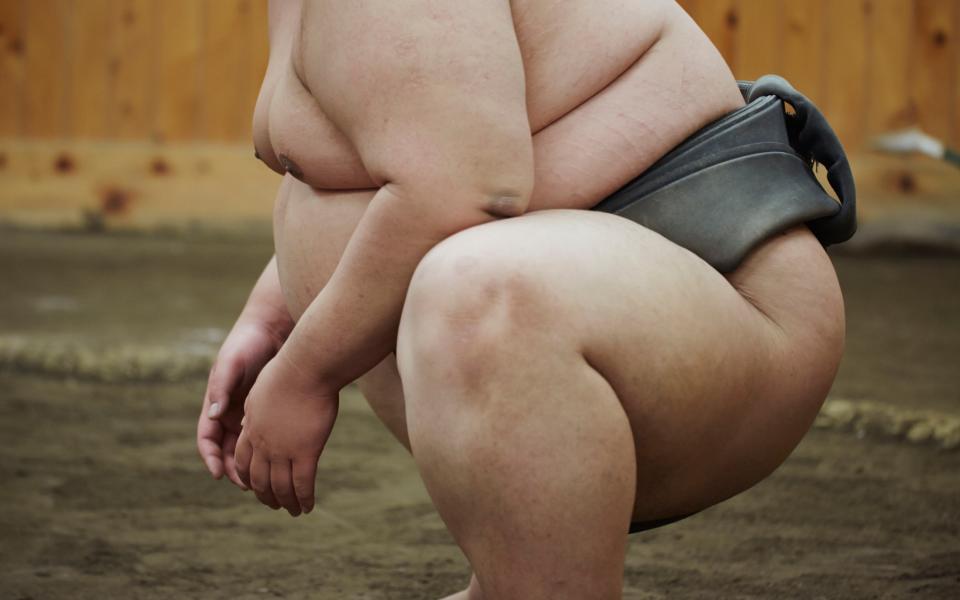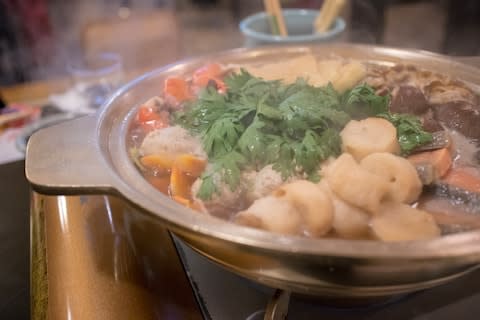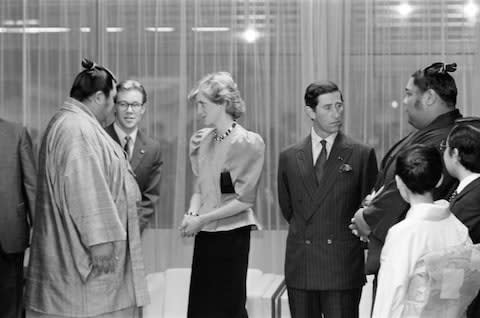The dark side of sumo wrestling – and the etiquette of watching a bout

They rinse their mouths, sprinkle some salt, clap their hands, stamp their feet – and then, once the niceties are over, they charge at their opponent in a fast-paced, powerful and near-naked clash that is often over in seconds.
Attending a sumo match has long featured high on the to-do lists of many Japan visitors (along with eating as much sushi as possible, riding on a Shinkansen bullet train and sipping sunset cocktails from a cloud-brushing skyscraper) – and with good reason.
There are few more compelling sights than watching two oversized sumo wrestlers in action, as they launch into a turbo-charged attempt to force their opponent out of a circular ring, with only their feet touching the ground.
Sumo not only ticks all the boxes in terms of engaging sporting entertainment – but also offers a unique glimpse into a world strictly defined by Japanese cultural traditions, social etiquette and spiritual rituals.
Among its most high-profile fans? US President Donald Trump, who arrives this weekend in Japan for a state visit. In between becoming the first foreign leader to meet the new emperor and chatting about North Korea with the prime minister, he’s planning to squeeze in a visit to the finals of the Summer Grand Tournament at the iconic Ryogoku Kokugikan sumo stadium in Tokyo (and even present the champion with a special US-made Trump Cup).

His visit will cast an international spotlight on a sport that is as traditional as it is appealing to watch. The roots of sumo – whose kanji symbols translate as “striking one another” – date back an estimated 1,500 years and, like many of Japan’s most defining cultural activities, are deeply entwined with the nation’s Shinto belief system.
Even today, the Shinto influence is reflected in countless elements of the sport – from the purification rituals at the start of a bout, involving wrestlers sprinkling salt on the ring and rinsing out their mouths, to the canopy overhanging the ring which resembles the roof of a Shinto shrine, reflecting how sacred the space is.
Life outside the ring is no less regimented for sumo wrestlers, who traditionally reside in communal “sumo stables” known as beya, where they cook, eat and sleep together as well as undergo a strict daily training regime, often starting at sunrise.

And then there is the not indelicate subject of their weight. Sumo wrestlers have long been defined by their immense body weight, which is often carefully built up through consuming industrial quantities of a special sumo dish called chanko nabe.
The dish is a delicious – and surprisingly healthy – hot pot-style stew, packed with mix of protein-rich ingredients such as vegetables, tofu, fish and meat. For a taste of the sumo dream dish, there are numerous chanko nabe restaurants clustered near Tokyo’s main stadium in Ryogoku.
Or for hardened fans, it’s worth noting that some companies can arrange morning visits to a sumo stable, offering a close-quarters glimpse into the physicality of their training followed by a chanko nabe lunch.

Despite the delicious stew on tap, the life of a sumo wrestler is clearly no picnic. I once had lunch with a famed former Grand Master Sumo Champion and what lingered most after our conversation was not necessarily his gargantuan proportions (although they were pretty impressive) or his wrestling successes – but a sense of the hardships he faced after moving into a communal sumo stable hundreds of miles from home as a young teenager. He poignantly described how at the end of a long, hard day, he would look at the stars in the night sky and think of his family (and his grandmother’s cooking).
It’s hard to ignore a darker side to sumo which has come to light in Japan in recent years, reflecting the challenges of an ancient sport adjusting to a modern world. Its reputation has been hit by a string of scandals, with high-profile incidents of bullying, harassment and beating coming to light, reflecting the deeply hierarchical, regimented and traditional culture that still lingers in the male-only world.
Perhaps unsurprisingly given the famously tough training conditions, numbers of recruits have also steadily dwindled over recent years. This has been partially countered by a surge in famous wrestlers from overseas – in particular, from eastern Europe and Mongolia.

But despite the scandals and the challenges, sumo clearly remains a much-loved presence in Japan’s sporting world and traditional culture – as reflected in the sell-out televised tournaments which take place throughout the year.
Visitors interested in catching a sumo match in person should keep an eye on the sport’s annual calendar: there are six official 15-day tournaments a year, including three in Tokyo (in January, May and September), plus Osaka (March), Nagoya (July) and Fukuoka (November).

In terms of Trump’s visit, local media has been aflutter for days about the potential etiquette blunders and security issues that go hand in hand with such a high profile (and outspoken) visitor: musings have ranged from whether he will he sit on a chair or, like other VIP ringside visitors, on the floor – and if he should wear slippers in the ring to hand over the cup.
Regardless of how things unfold, the US president’s presence on Sunday is likely to have one positive effect: it will cast a high-profile spotlight on a sporting tradition that is deeply tied to Japan’s unique cultural heritage (even if Trump does commit a gaffe or two in the process).

 Yahoo News
Yahoo News 